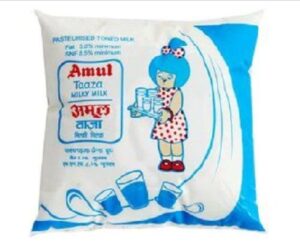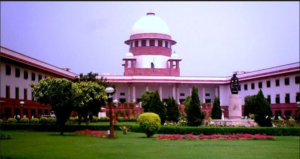Towards United, Integrated, Democratic And Secular India
New Delhi, 14th August 2021: On the eve of India’s Independence, towards midnight on August 15, 1947, first Prime Minister Jawaharlal Nehru delivered a “Tryst with Destiny” speech, which spoke on the aspects that transcended Indian history.
Considered to be one of the greatest speeches of the 20th century, he said long years ago we made a tryst with destiny, and now the time comes when we shall redeem our pledge, not wholly or in full measure, but very substantially.
“At the stroke of the midnight hour, when the world sleeps, India will awake to life and freedom. A moment comes, which comes but rarely in history when we step out from the old to the new when an age ends, and when the soul of a nation, long suppressed, finds utterance. It is fitting that at this solemn moment, we take the pledge of dedication to the service of India and her people and the still larger cause of humanity,” he said.
In the run-up to independence, a vile plan was devised by a handful of powerful princes to remain independent. The plan was led by the chancellor of the chamber of princes. The Nawab of Bhopal was operating under the direct patronage of Muhammad Ali Jinnah, Lord Wavell and the British Prime Minister Winston Churchill to create a third dominion called Princesestan, along with India and Pakistan.
It was panned that the 565 princely states would stay outside the ambit of the two free states and retain paramountcy under the aegis of the departing British. The success of such a malevolent plan would have made the newly independent nation unstable and vulnerable. But three persons Pt Jawahar Lal Nehru, Sardar Patel and Lord Mount Batten battled the rulers of the princely states at every twist and turns and foiled the nefarious British plan to balkanize India.
At the 1929 Lahore session of the Indian National Congress, the Purna Swaraj declaration, or “Declaration of the Independence of India” was promulgated, and 26 January 1930 was declared as Independence Day. The Congress called on people to pledge themselves to civil disobedience and “to carry out the Congress instructions issued from time to time” until India attained complete independence. Celebration of such an Independence Day was envisioned to stoke nationalistic fervour among Indian citizens, and to force the British government to consider granting independence. Congress observed 26 January as the Independence Day between 1930 and 1946. The celebration was marked by meetings where the attendants took the “pledge of independence”. Jawaharlal Nehru described in his autobiography that such meetings were peaceful, solemn, and “without any speeches or exhortation”. Gandhi envisaged that besides the meetings, the day would be spent in doing some constructive work, whether it is spinning, or service of ‘untouchables,’ or reunion of Hindus and Mussalmans, or prohibition work, or even all these together”. Following actual independence in 1947, the Constitution of India came into effect on and from 26 January 1950.
Arrival of Lord Mountbatten: In 1946, the government in Britain realized that it had exhausted its coffers due to World War II. It also realized that it had neither the mandate at home, the international support nor the reliability of native forces for continuing to maintain control in an increasingly restless India. On 20 February 1947, Prime Minister Clement Attlee announced that the British government would grant full self-governance to British India by June 1948 at the latest.
The new viceroy, Lord Mountbatten, advanced the date for the transfer of power, believing the continuous contention between the Congress and the Muslim League might lead to a collapse of the interim government. He chose the second anniversary of Japan’s surrender in World War II, 15 August, as the date of power transfer. The British government announced on 3 June 1947 that it had accepted the idea of partitioning British India into two states; the successor governments would be given dominion status and would have an implicit right to secede from the British Commonwealth.
The Indian Independence Act 1947 of the Parliament of the United Kingdom partitioned British India into the two new independent dominions of India and Pakistan (including what is now Bangladesh) with effect from 15 August 1947, and granted complete legislative authority upon the respective constituent assemblies of the new countries. The Act received royal assent on 18 July 1947.
Millions of Muslim, Sikh and Hindu refugees trekked the newly drawn borders in the months surrounding independence. In Punjab, where the borders divided the Sikh regions into halves, massive bloodshed followed; in Bengal and Bihar, where Mahatma Gandhi’s presence assuaged communal tempers, the violence was mitigated. In all, between 250,000 and 1,000,000 people on both sides of the new borders died in the violence. While the entire nation was celebrating Independence Day, Gandhi stayed in Calcutta in an attempt to stem the carnage. On 14 August 1947, the Independence Day of Pakistan, the new Dominion of Pakistan came into being; Muhammad Ali Jinnah was sworn in as its first Governor-General in Karachi. The Constituent Assembly of India met for its fifth session at 11 pm on 14 August in the Constitution Hall in New Delhi. The session was chaired by President Rajendra Prasad.
The members of the Assembly formally took the pledge of being in the service of the country. A group of women, representing the women of India, formally presented the national flag to the assembly. The Dominion of India became an independent country as official ceremonies took place in New Delhi. Nehru assumed office as the first prime minister, and the viceroy, Lord Mountbatten, continued as its first governor-general. Gandhi’s name was invoked by crowds celebrating the occasion. He however did not participate in the official events. Instead, he marked the day with a 24-hour fast, during which he spoke to a crowd in Calcutta, encouraging peace between Hindus and Muslims.
Kashmir and Article 370: Since independence Kashmir had remained a restless region, despite the efforts of the successive governments to bring an end to the conflict. Article 370 was always described as the root cause of the Kashmir problem. The BJP decision to make it inoperable by a constitutional amendment was a watershed moment in Kashmir history and was expected to draw a more palpable reaction from Kashmiris and the international community.
What exactly followed was largely a mute resistance from all the concerned stakeholders.
Internationally India has emerged as an indispensable economic, strategic and geopolitical power in the 21st. century, given its power of being large democracy in the world and its role as a counterweight to China’s growing influence. In recent years because of robust Indian diplomacy, there has been a substantial decline in the international interest in the region, despite Pakistan’s efforts at wielding Kashmir as a weapon against India’s diplomatic success.
Indian vigorous diplomatic efforts to quell any backlash to the removal of Kashmir’s special status were far-reaching and well rounded. The Union Government’s action in Kashmir came at an appropriate time by design and partly by political astuteness to make article 370 of the Constitution inoperable, repeal article 35-A and bifurcate the State into two Union Territories followed by series of events that made Kashmiris gradually stomach the Union’s decision and eventually distracted the international community.
Thus, the Countrymen have welcomed the full integration of Jammu and Kashmir with India and are proud citizens of United, Integrated, Democratic and Secular Independent India.
(Ashok Bhan is a Senior Advocate at the Supreme Court of India and a geo political analyst)








